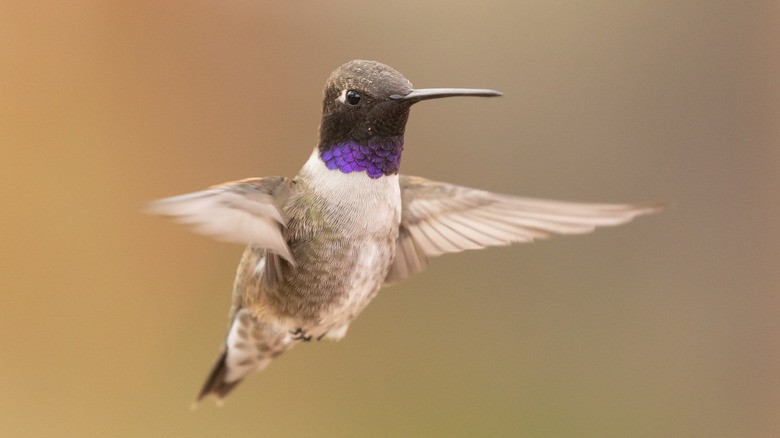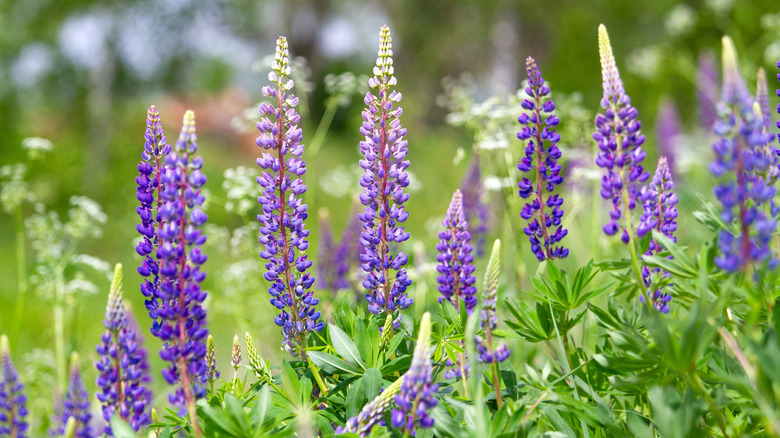Invite Hummingbirds To Your Lawn With This Gorgeous Flower
If you want to feel like you are in a hummingbird heaven, make sure you are doing all you can to draw the petite birds into your yard. Feeders are not the only way to attract hummingbirds to your garden. You should offer them more than shelter and water like an abundance of flowering native plants in your yard. Lupines could be a good option.
Lupines (Lupinus spp.) are legumes that are native to both South and North America, as well as parts of Europe and Africa, so there is a high chance you can grow one native to your region. With attractive, compound leaves, this member of the pea family produces flowers in a wide range of colors, including shades of blue, purple, pink, white, yellow, and red. Hummingbirds love lupines as a source of nectar. Since these plants bear large clusters of flowers, they make it easy for hummingbirds to eat a lot without having to fly far, and you do not have to limit your selection to red lupines.
How to grow lupine to attract hummingbirds to your yard
Although hummingbirds are attracted to the color red, these awe-inspiring birds do not limit themselves to red flowers when feeding. For instance, blue-colored flowers like dwarf lupine are favorites of both rufous and calliope hummingbirds. So once you decide these plants should be part of your hummingbird nectary, you will want to know how to grow and take care of a lupine plant. These flowers can grow in full sun or part shade and tend to do best in acidic soil with good drainage – for gardeners in the right type of climate, that is. Lupines can be grown in USDA Hardiness Zones 4 to 8 depending on the species.
Lupines are excellent plants for woodlands, natural areas, and cottage gardens. And hummingbirds are not the only pollinators that forage from these plants — bees love them too. When adding lupines to your wildlife wonderland, make sure to line your lawn with a wide selection of perennial plants that will fill your yard with hummingbirds, in addition to lupines. And along with including plants like lupine around your lawn, turn your yard into a hummingbird feeding ground by practicing wildlife-friendly gardening strategies, like avoiding the use of pesticides.

